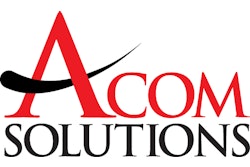As competition from supermarkets, big box retailers heats up, pharmacies fighting back by investing in technology to improve service, IHL reports
Franklin, TN — August 26, 2004 — North America's top 20 drug stores represent nearly $2 billion in information technology (IT) buying power focused on a variety of different technologies to improve service and better compete with supermarkets and big box retailers, according to a new report from retail sector consultancy IHL Consulting Group.
IHL is a Franklin, Tenn.-based analyst firm and consultancy serving retailers and retail technology vendors. In its report, "IT and the North American Drug Store," IHL identifies the top 20 North American drug stores by 2003 sales volume and highlights the various hardware, software and in-store systems currently installed at the stores and their defined IT systems needs going forward.
In 2004 these stores will spend $1.8 billion on such technologies as pharmacy systems, radio frequency identification (RFID) technology, kiosks, self-checkout and vendor collaboration, according to IHL.
"In this market, the key driver to change and IT spending is 'service, service, service,'" said Greg Buzek, founder and president of IHL. "These retailers are facing relentless competition from Wal-Mart and supermarket pharmacies and cross-border prescriptions. They are using their IT dollars to fortify supply chain and pricing solutions as well as support increased customer service solutions to improve pharmacy effectiveness and customer reach."
According to the report, a significant portion of this money is going into the use of RFID technology to increase the accuracy and authenticity of pharmaceuticals, capital outlays for new store systems that work within newly built or upgraded drive-through services, and updated merchandising systems that must manage an increasingly wider array of perishable and traditional products.
The IHL report examines the impact of Wal-Mart and others on drug store market competition and IT spending; online pharmacies, supermarkets, warehouse clubs and supercenters; increased customer expectations; the changing landscape, from prescription market potential and governmental policy to chain wide bankruptcies, mergers and partnerships; and labor shortages, vendor dominance and increasing "front end" sophistication.
The report also includes technical profiles on the top 20 drug store chains, including competitive comparisons, hardware and software deployed, from checkout systems and related in-store technologies, such as POS, distribution and inventory management and key corporate information and personnel contacts.
Franklin, TN — August 26, 2004 — North America's top 20 drug stores represent nearly $2 billion in information technology (IT) buying power focused on a variety of different technologies to improve service and better compete with supermarkets and big box retailers, according to a new report from retail sector consultancy IHL Consulting Group.
IHL is a Franklin, Tenn.-based analyst firm and consultancy serving retailers and retail technology vendors. In its report, "IT and the North American Drug Store," IHL identifies the top 20 North American drug stores by 2003 sales volume and highlights the various hardware, software and in-store systems currently installed at the stores and their defined IT systems needs going forward.
In 2004 these stores will spend $1.8 billion on such technologies as pharmacy systems, radio frequency identification (RFID) technology, kiosks, self-checkout and vendor collaboration, according to IHL.
"In this market, the key driver to change and IT spending is 'service, service, service,'" said Greg Buzek, founder and president of IHL. "These retailers are facing relentless competition from Wal-Mart and supermarket pharmacies and cross-border prescriptions. They are using their IT dollars to fortify supply chain and pricing solutions as well as support increased customer service solutions to improve pharmacy effectiveness and customer reach."
According to the report, a significant portion of this money is going into the use of RFID technology to increase the accuracy and authenticity of pharmaceuticals, capital outlays for new store systems that work within newly built or upgraded drive-through services, and updated merchandising systems that must manage an increasingly wider array of perishable and traditional products.
The IHL report examines the impact of Wal-Mart and others on drug store market competition and IT spending; online pharmacies, supermarkets, warehouse clubs and supercenters; increased customer expectations; the changing landscape, from prescription market potential and governmental policy to chain wide bankruptcies, mergers and partnerships; and labor shortages, vendor dominance and increasing "front end" sophistication.
The report also includes technical profiles on the top 20 drug store chains, including competitive comparisons, hardware and software deployed, from checkout systems and related in-store technologies, such as POS, distribution and inventory management and key corporate information and personnel contacts.







